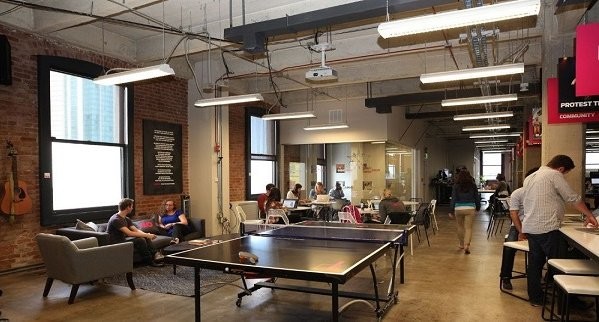
Common Area Maintenance Terms
Most commercial leases are Triple Net Leases (also called NNN Leases). In such leases, the tenants pay their allocated share of Property/Real Estate Taxes, Insurance and Common Maintenance Expenses. This article covers CAM expenses and the terms associated with it.
What Expenses Fall Under CAM?
Common area maintenance or CAM expenses are defined as charges paid by tenants of commercial properties to landlords to cover expenses incurred on managing common facilities, amenities and areas. In most commercial buildings, businesses share common areas and facilities such as hallways, elevators, building front office or reception, security expenses, parking lot, landscaped areas, public restrooms, and common area utilities etc. These expenses are recognized business expenses for tenants and are tax-deductible in nature. CAM Expenses are further divided in two categories:
Controllable Expense: Expenses that can be controlled or managed. Most CAM expenses fall under Controllable Expenses category. E.g. landscaping, security, porter services etc.
Uncontrollable Expense: Expenses that are externally controlled or determined. E.g. Snow removal, real estate taxes, utilities, insurance
Basis for Allocating CAM Charges
CAM Charges are usually charged on pro-rated basis to tenants. It is based on proportion of rented area of the tenant to the total rentable area of the property. Some leases also do a simple average based on number of units in the building and charge the tenants.
CAM Terms
There are many factors that define the extent of CAM charges that can be passed on to the tenant. Most commercial leases have “caps” and “floors” to govern the conditions and the amount by which CAM charges can increase every year. We have covered some of the commonly used terms in leases below:
Yearly Cap
Most commercial leases will have yearly cap on annual increase in CAM charges. The yearly CAP defines the fixed percentage on which CAM charges can rise in a year. Caps can also be defined by an absolute $$ amount or by a per square foot (psf) amount. There are different types of CAP. Caps can be calculated either year-on-year or over a fixed base year.
Base Year Caps: A base year is fixed (usual the year when the lease commences/starts). The CAM increase is capped at a certain fixed % increase over the pre-determined CAM charge in the base year. For e.g. if 2015 is the base year and the pre-determined CAM charge for 2015 was USD 500. The base year cap may be 5% (compounded annually). So, in 2016, the CAM charge would be 525 and in 2017, the CAM charge would be 550.
Year on Year Caps: The CAM % increases by a predetermined % every year over the last year’s actual CAM charges. For e.g. If 2015 (starting year) the CAM charge was USD 500, and y-o-y cap is 5%, then the CAM Charge would be $525 (2016) and $551.25 (2017).
The Caps themselves may be cumulative caps or non-cumulative caps as defined below:
Cumulative CAPs: Cumulative caps allow the unused caps (yearly % increase or the psf amount or the flat $$ amount) to add over the term of the lease.
For e.g. the cap is defined as yearly percentage increase of 5%. In actual, in 2016, the CAM only increased by 2% (based on actual expenses incurred by landlord), then the unused 3% of 2016 can be carried over to the next year. In 2017, the CAM expense actually increased by 10%, then the tenant can still be charged an increased y-o-y CAM of 8% (5%+3%).
Over a long-term lease (say 5-10 years), the cumulative CAPs can accumulate significantly. Another more stringent form (from tenant perspective) is cumulative compounded CAP increase. In such cases, the yearly percentage increase of the CAM Cap accumulates at a compounded rate each year. So, in above example, the CAP available to the landlord would not be 8% but 8.15%. The 3% unused cap of 2016 is compounded with the 5% cap available for 2017.
Non-Cumulative CAPs: Non-cumulative CAPs do not allow the unused caps (yearly % increase or the psf amount or the flat $$ amount) to add over the term of the lease)
So, in the above example, in 2017, the CAP expense can only be increased by 5%. The unutilized CAM increase of 3% of 2016 cannot be carried forward.
CAM Floors
In the above example, we have considered only cases where the actual CAM charges lower than the charged derived using the CAP. In many cases, the actual CAM charges may be lower than the charged derived using the CAP. In such cases, many landlords include CAM Floors in their leases.
CAM Floors specifies the minimum increase in CAM charges that will happen irrespective of the actual CAM charges. So, if the CAM charges are lower than the charged derived using the CAP, then the CAM charges may increase by a % or amount as specified in the CAM Floor. Floors will budget/smoothen the CAM increases over multiple years especially in low inflationary market scenarios.
Accounting and reconciling CAM charges in a commercial lease is complicated and needs to be done carefully. Our next article will cover that in greater detail.
Property Manager at Beacon Partners
5yHelpful explanation of CAM charges.
Management Consultant at Accenture with a focus on global Corporate Real Estate management
6yReally helpful, thanks. Looking forward to the next article.